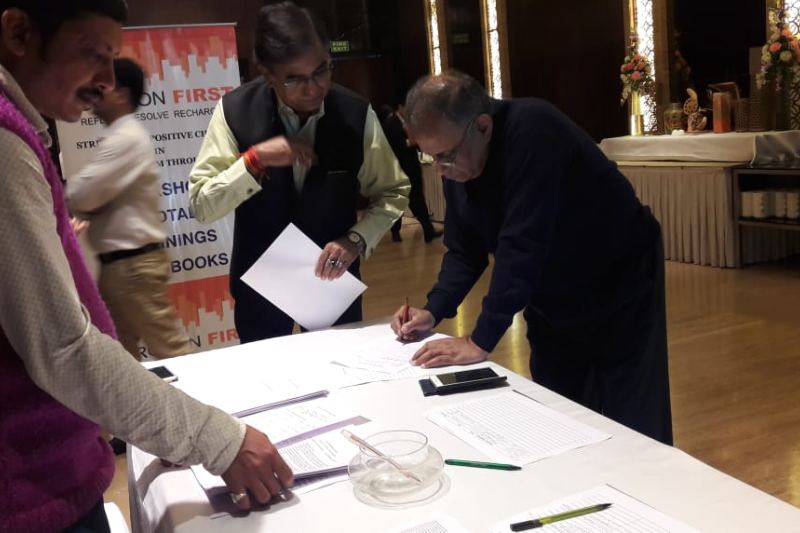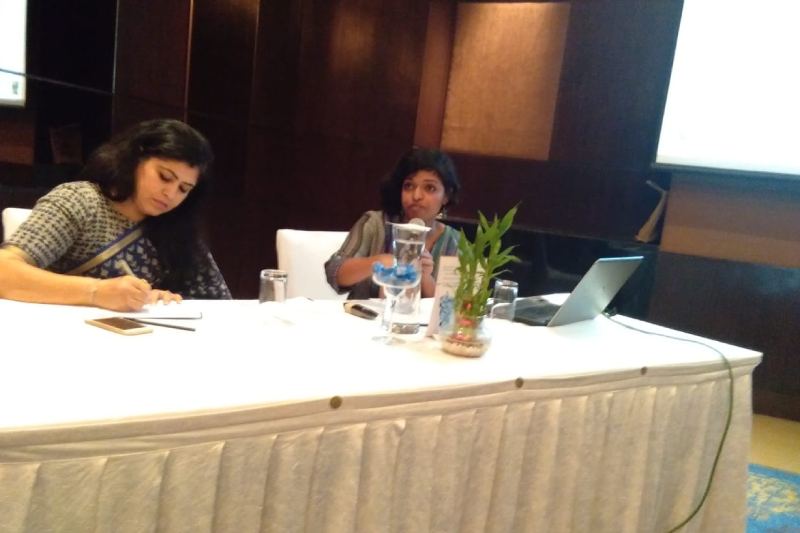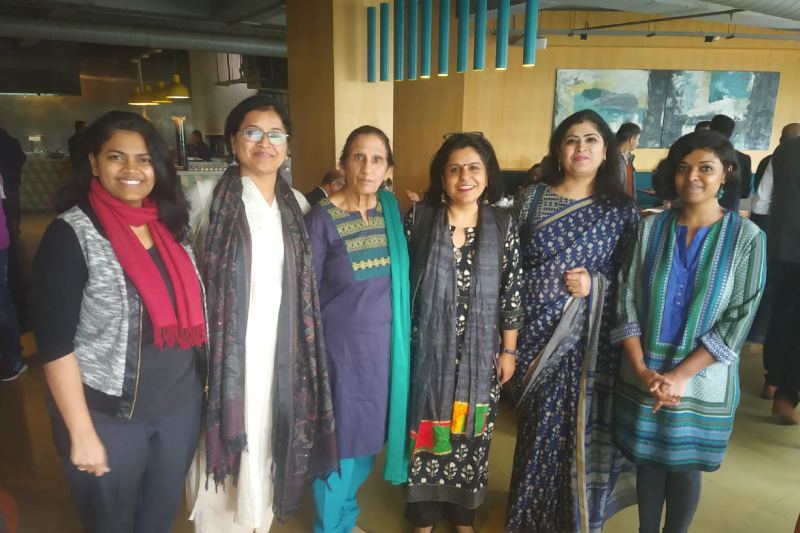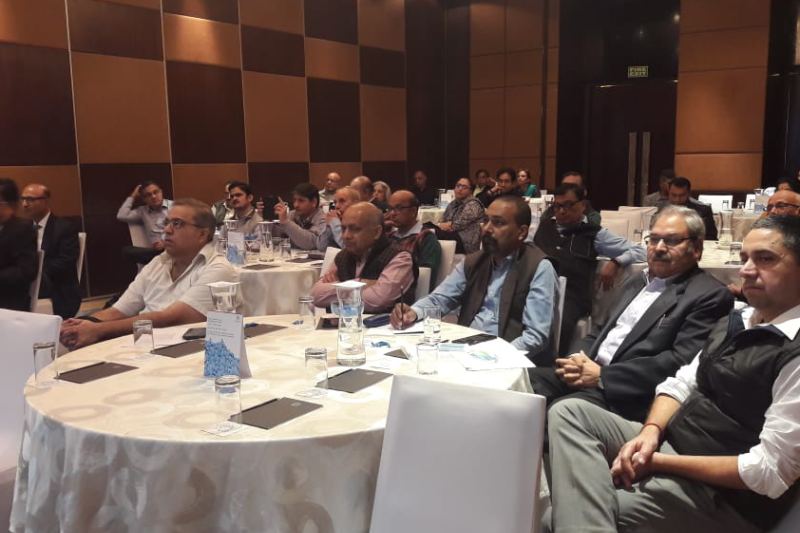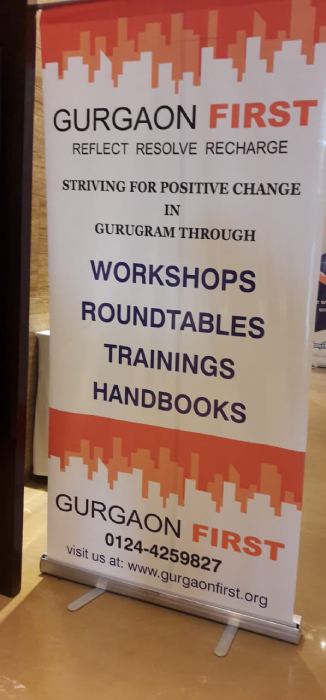Shift to lower subsidy regime and solar promotion from Hareda to DHBVNL should not reduce solar rooftops uptake Gurgaon First and Centre for Science and Environment conducted a solar roundtable for RWAs. Participating in the roundtable were prominent RWAs, DLF Ltd, solar companies, DHBVNL, Hareda, NGOs and progressive citizens.
The solar rooftop has touched almost 50 MW in Gurugram, but the potential is close to 300 MW. Gurugram could very well be a solar city, given conductive policies, good amount of solar days and a progressive mindset. But for it to be a solar city in a true sense it is not the uptake by commercial and the industrial sector, but the uptake by the residential sector that has to happen. While there are hundreds of houses in the city that have installed solar on an individual basis, only a dozen odd RWAs have adopted solar including Devender Vihar, Wellington RWA, Hewo Apartments-I, The Citizen, Vatika City, Maple Heights, DLF Icon, Vijay Ratan Vihar are among those that have installed solar.
Gurugram, like the rest of Delhi-NCR, witnessed a sharp deterioration in air quality beginning in October 2019. High concentration of particulate matter (PM) choked the city, as the air quality index (AQI) alternated between very poor and severe levels. Solar, cannot fully replace, but reduce the usage of polluting DG sets in the city. There are over 10,000 DG sets in the city in over 300 residential and commercial sites.
In her opening remarks, Shubhra Puri, Founder Gurgaon First ascertained her belief that Gurgaon is poised to become a solar city with its progressive mindset and the Haryana government’s progressive solar policies. She said “On one hand, citizens must adopt solar for its sheer goodness in helping reduce carbon emissions and on the other, they must employ solar because of the economic gains.” But she added, “The authorities need to make solar installations a hassle-free process and remove delays in the operationalizing of net meters”.
This context setting was followed by a heartfelt plea from Mr. Manas Fuloria, who urged the participants to do their part to save the planet for their children and grand-children. He went on to say “Gurgaon is one of the richest and the fastest growing cities in India, it must use this capital to demonstrate the power of solar energy to the rest of India”.
Shweta Miriam Koshy from CSE reiterated the negative impact of DG set usage on the environment, presenting results from CSE’s studies. She said “Though solar by itself, does not offer an alternative for DG sets during power cuts, it does reduce Gurugram’s dependence on its 10,500 odd DG sets used for regular, everyday power supply.” “Further”, she added, “a host of facilitative measures such as net-metering, banking and financial incentives have rendered the technology economically viable and even favourable”.
Developers and solar prosumers too came forward, highlighting the technologies many benefits. Representatives from solar powered RWAs – Mr J K Gupta of the Citizen and Mr. Vineet Bagga (ex-RWA President) of Wellington. Through real examples, they drove home the point on economic benefits, showcasing the reduction on power bills by the adoption of the SRT. Mr. Sanjeev Saxena, Senior Vice President at DLF Ltd added “We are increasingly aware of the importance of solar energy, and with every passing installation our confidence is growing. We have 40kW of solar installed and another 120kW being installed.”
Under the Centre’s most recent policy ‘Phase II- Grid Connected Solar Rooftop’ the responsibility for both installations and subsidy disbursal has been transferred to the distribution utility. When asked for clarity on the way forward, Mr. Gaurav Dahiya, Sub Divisional Officer, DHBVN said “We are driven by the enthusiasm showcased here, and will do everything in our power to fast track the process”. “We have streamlined our activities and are picking up pace, with urgency” he added.
Mr Rameshwar Singh, Programme Coordinator at (Haryana Renewable Energy Development Agency (HAREDA), with his years of experience, was present to explain the nitty-gritties of the various government schemes. Though no longer the intermediary, he said, “HAREDA will continue working towards increasing solar adoption in Haryana. It is developing a strategy to increase solar energy in Gurugram, looking to draw as much as 20% of its energy from solar rooftops”.
There was consensus among the participants on the economic and environmental superiority of solar rooftops over DG-based electricity. CSE and GF will continue hosting similar knowledge dissemination and awareness driven meetings. The hope is that driven consistent awareness programmes, Gurgaon will become a solar powered city.

